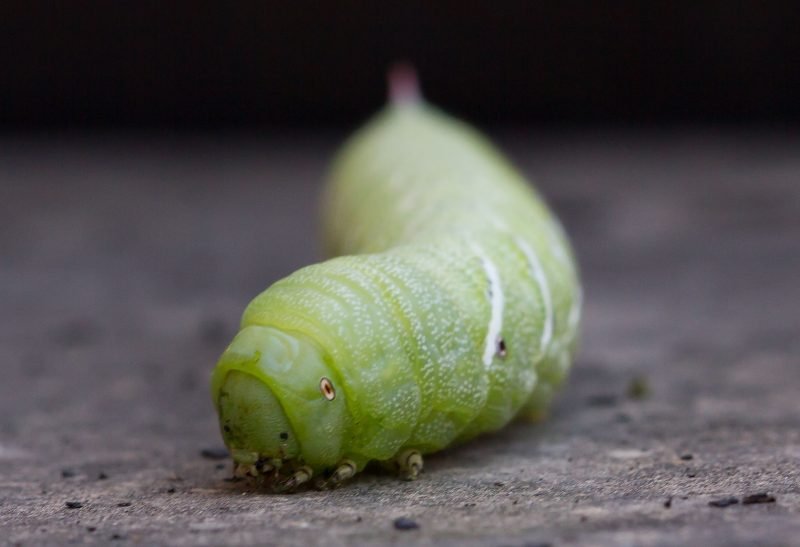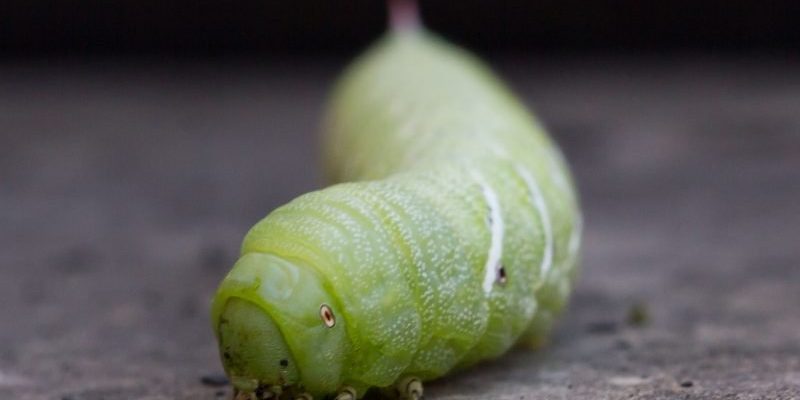
What Are Tobacco Hornworms?
Tobacco hornworms, known scientifically as *Manduca sexta*, are large caterpillars that eventually transform into impressive sphinx moths. They’re notorious for their voracious appetites, especially when it comes to tobacco plants. But don’t let their size intimidate you; knowing what they look like and their habits can help you manage them effectively.
These caterpillars can reach up to 4 inches in length and are bright green, making them blend in well with leafy plants. If you spot one munching away, it may have a striking diagonal white stripe on each side of its body. This feature is one of its defining characteristics. They are often found on the underside of leaves, making them somewhat tricky to see unless you’re looking closely.
You might be wondering, **why should I care about tobacco hornworms?** Well, if you’re growing tobacco or even tomatoes, these little guys can quickly become a significant pest. A single tobacco hornworm can consume a lot of foliage, leading to diminished plant health and lower yields. So, if you see one, it’s time to take action.
What Are Tomato Hornworms?
Now let’s talk about tomato hornworms, scientifically known as *Manduca quinquemaculata*. Like their tobacco-loving relatives, these caterpillars are also large and green, but they typically favor tomato plants. If you’ve ever grown tomatoes, you might have had an unwelcome visit from these pests.
Tomato hornworms can also grow up to 4 inches in length, and they feature the same vibrant green color. However, their distinctive markings include a series of V-shaped markings on the sides. This can be a helpful clue when identifying them. They tend to hide during the day, lurking on the undersides of leaves or blending into the plant.
So, why should you keep an eye out for tomato hornworms? They can devastate your tomato plants in no time! Just like tobacco hornworms, they can eat their weight in foliage, leading to wilted leaves and reduced fruit production. The quicker you can identify and manage them, the healthier your garden will remain.
Physical Differences
At first glance, you might think tobacco and tomato hornworms are nearly identical. And while they share a lot of similarities, there are a few key physical differences that can help you tell them apart.
- Color: Both hornworms are green, but the tobacco hornworm has a bluish-green hue while the tomato hornworm is a brighter green.
- Markings: The tobacco hornworm has white stripes running diagonally along its body, whereas the tomato hornworm sports V-shaped white or yellow markings.
- Size: Although both can grow to be about 4 inches, the tobacco hornworm may appear slightly bulkier due to its more robust body structure.
These differences may seem subtle, but they can make a huge impact on how you approach pest control in your garden. Knowing which hornworm you’re dealing with can lead to more effective management strategies, saving your plants from further damage.
Feeding Habits
When it comes to what these hornworms eat, there’s a clear divide. Tobacco hornworms have a preference for tobacco plants and may also munch on related species like peppers. On the other hand, tomato hornworms are all about those juicy tomatoes and might even snack on eggplants.
Both species are **voracious eaters**, but they tend to stick to their favorite plants. This means if you spot an eating frenzy, you can narrow down which type of hornworm you’re dealing with.
Imagine walking through your garden and finding entire leaves chewed away. If it’s a tobacco hornworm, you might find it on your tobacco plants or even peppers. Likewise, if you see the same scenario on your tomato plants, it’s likely a tomato hornworm. Recognizing their feeding habits can save time and effort when addressing the problem.
Life Cycle and Behavior
Let’s take a moment to explore the life cycle of these hornworms. Both species start as eggs, which are typically laid on the leaves of their host plants. After about a week, the eggs hatch into larvae (those big, green caterpillars we’ve been talking about) that then feast on the leaves.
As they grow, they will go through several molts. Within a few weeks, they will reach their full size and then burrow into the soil to pupate. This is where they undergo a magical transformation into moths. They emerge usually in late summer, ready to start the cycle over again.
You might be curious about their behavior. Both types of hornworms are nocturnal feeders—meaning they’re most active at night. During the day, they tend to stay hidden, making them harder to find. This is why regular garden checks are so important, especially in the early morning or evening.
Managing Tobacco and Tomato Hornworms
So, how do you deal with these garden pests? Fortunately, you have several options to manage both tobacco and tomato hornworms effectively. Here’s a quick rundown of some effective strategies:
- Handpicking: One of the simplest methods is just to pick them off by hand. Wear gloves and toss them into soapy water to eliminate them.
- Natural Predators: Encourage beneficial insects like wasps and birds, which naturally prey on hornworms.
- Insecticides: If the infestation is severe, you might opt for insecticides specific to caterpillars. Be sure to follow the instructions carefully to avoid harming beneficial insects.
- Neem Oil: This natural pesticide disrupts the life cycle of hornworms and can help reduce their population.
These management strategies can help keep both species in check and ensure your garden remains healthy and productive.
Understanding the differences between tobacco hornworms and tomato hornworms may seem like a small detail, but it can significantly impact your gardening experience. By knowing what you’re up against, you can take the right steps to protect your plants and keep your garden thriving.
Whether you’re growing tomatoes, tobacco, or both, being vigilant in spotting these pests will pay off in the long run. So next time you venture into your garden, keep an eye out for those munching caterpillars. The better you know your foes, the better prepared you’ll be to fend them off. Happy gardening!

